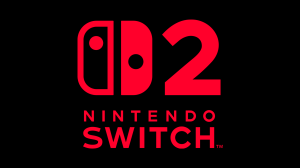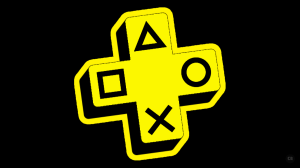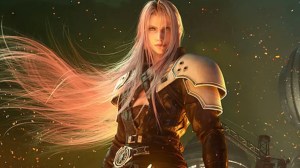The Friendlier Superman vs Batman Story

Besides shared parenting nomenclature, Batman and Superman have several things in common, like wanting to save the world. They just have very different ways of doing it. Very, very different ways. Polar opposite ways. Dark versus light. Cynicism versus optimism. Fear versus hope.
Videos by ComicBook.com
At least, that’s the way I remember it. Two reboots of the DC Universe later and a movie which made everyone grim and gritty, I have no idea what the status quo is.
I did enjoy the previous status quo, though. One of the best examples of it was the “Superman/Batman” series written by Jeph Loeb a decade ago. The first book, “Public Enemies”, drawn by Ed McGuinness (inked by Dexter Vines), is my reference book for how well this relationship can work. Yes, I’d happily accept Frank Miller’s “Dark Knight Returns” as another strong example of it, but that’s only a part of a larger whole. With “Superman/Batman: Public Enemies”, the whole story is about the relationship between the Big Blue Boy Scout and the Dark Knight.
If the movie wasn’t what you were hoping for, I think this book might be more up your alley.
This book came at a time when successful businessman Lex Luthor was president. A Kryptonite meteorite threatens to crash into the earth, and Luthor uses this as another excuse to challenge Superman publicly. Surely, this meteorite is the illegal alien’s fault, and he should be captured and made accountable for it, right?
No, seriously, I’m not trying to draw parallels to any political events in recent times. I’m trying very hard. Very, very hard.
Jeph Loeb Throws All the Crazy In

Being a superhero comic, things escalate quickly, as Loeb brings in a ton of guest stars from the DC Universe to capture Superman, and one or two to help him. The book is a gloriously large scale chase and fight, with big moments, clever twists, and an ending that changed the DC Universe at the time, leading into its next continuity-changing crossover opportunity. (“Infinite Crisis,” I think?)
Jeph Loeb’s strongest tool is the narration of the book, as the two characters take turns walking the reader through the series. It’s not subtle and it’s not challenging. What it is, however, is clever in the way it plays the two points of view off of each other so strongly. The two clearly respect each other, but treat each other not unlike brothers.
Batman and Superman don’t get into physical or verbal altercations with each other in this story, but their trains of thought are often on such conflicting tracks that it provides all the drama the reader needs. Superman and Batman CAN work together and they do have a common goal. They just have different ways to get there, and compromise will occasionally be necessary.
The narration isn’t conciliatory and understanding. Batman is still sharp and sarcastic. Superman can still predict Batman’s negativity and warped worldview. The two play off that, and while the visuals give you a strong story to follow, Loeb’s narration is not there just for explanatory purposes. It’s there to provide a whole second level to the story. I wish more comics were half as well thought through from the character’s point of view and inspiration as this one is. Loeb has a definite point of view on these characters, and he brings that home.
The fifth issue is a high point for character moments, as the battle comes to the White House and the entire Batman family and Superman family of characters show up to figure things out. I don’t want to spoil it, but there are some fun twists and turns in the issue, and a couple of real fist pumping moments for the titular duo.
All of this only scratches the surface of all the events of this story. I haven’t mentioned the BatSupes spaceship or the future Superman or Metallo’s potential as the Wayne Family killer, or Solomon Grundy on the National Mall, or Luthor’s armor, or the Amanda Waller kiss.
Yeah, it’s a crazy book and that’s why I love it so.
The Visual Half from McGuinness and Company

Ed McGuinness’ art comes from the same school that brought us the likes of Mike Wieringo, Dale Keown, and Paul Pelletier, with a dash of Alan Davis. He draws big strong characters that still feel soft and somehow rounded. Maybe it’s in Dexter Vines’ inks, but his art relies less on fine details and cross-hatching, and more on the smooth line and solid black areas. Everyone in this book is bigger than real life, struggling to stay inside the panel borders. It’s a great energy.
The characters are iconic, strike heroic poses, and look impressive on the page while still clearly telling the story. McGuinness’ art is bold and direct, much like Loeb’s story. The two are a natural pairing. And Loeb gets out of McGuinness’ way, too, giving his story room to breathe, letting McGuinness use larger panels and big visuals to tell the story.
There’s no shortage of characters for McGuinness to draw, either. Luthor goes out of his way to throw an enormous number of both villains and heroes after Superman (and Batman, who stands by his friend’s side). When that doesn’t work, he throws heroes against them. That’s when Batman and Superman get sneaky.
Dave Stewart handles the colors in straightforward superhero mode. The colors are mostly literal. There are no color holds or color keying in the book. What you see is what the real world version of these events would look like, with the occasional and well placed special effect to blur a background during some fast action, or some glows on neon lights. It helps keep this book feeling like an actual comic book, which I appreciate more as I get older. Not every comic needs to feel “real” or have sculpted colors and photorealistic art. Give me a strong cartoonist, who can draw anything in a stylized way, and I’m happy.
And, of course, since this is a Jeph Loeb series, Rich Starkings and Comicraft are lettering it in their style. It works. The sound effects are classic comic book treatments, and the dialogue is restrained, with some nice touches to differentiate things like the narrations and some extreme characters’ voices.
Read It Now

There is no shortage of ways to read this book, thankfully.
- The first issue was a Free Comic Book Day offering, and is still available for free digitally at Amazon/Comixology. It’s not the best issue of the six, because things build up so nicely over the next five issues. It does, however, sell the overall tone and mission of the comic well. And, hey, it’s a free shot at it.
- I’m reviewing the story from the hardcover edition, which has the cover image printed right on the book and no dust jacket required. It would seem that it’s out of print, judging by the $100+ price tag it’s going for on Amazon from third party sellers. Look on eBay, instead, where you can find copies at cover price or less.
- You can still buy the hardcover edition packaged with the DVD/Blu-ray set of the animated movie they made of this story for $35. That’s probably the best bang for your buck, if you’re into the animated movies.
- There’s also an Absolute Edition of the first 13 issues of the series, which also includes Michael Turner’s Supergirl arc. That will run you $100.
- There’s a trade paperback for your more budget-minded option. It looks like it might be out of print, also, but I see it easily and cheaply available on a couple of web retailers’ stores for under $10.
- Digitally, the book is available through both Amazon and Kindle.
PipelineComics.com || Instagram || Twitter || E-mail









